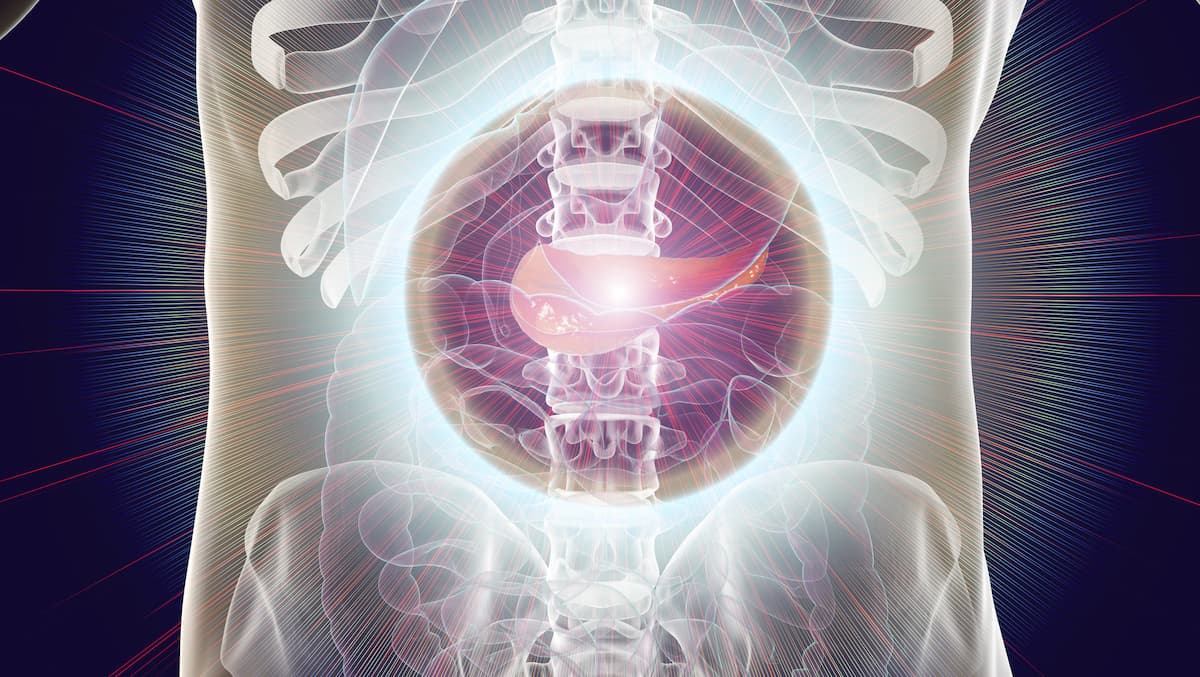Cabozantinib Earns CHMP Recommendation in Pancreatic Neuroendocrine Tumors
Data from the phase 3 CABINET trial support the CHMP’s positive opinion of cabozantinib in well-differentiated extrapancreatic or pancreatic NETs.
The FDA previously approved cabozantinib for patients with pancreatic or extrapancreatic NETs based on findings from the CABINET trial in March 2025.

The Committee for Medicinal Products for Human Use (CHMP) of the European Medicines Agency has adopted a positive opinion of cabozantinib (Cabometyx) as a therapy for adults with unresectable or metastatic well-differentiated extrapancreatic or pancreatic neuroendocrine tumors (NETs) following progression on at least 1 systemic therapy apart from somatostatin analogues, according to a press release from the developer, Exelixis, Inc.1
The European Commission will now review the CHMP’s recommendation and is anticipated to decide on approving cabozantinib for this population later in 2025.
“[NETs] are difficult to treat given their indolent nature and lack of robust responses to traditional oncology agents. This often results in people living with this type of cancer for long periods and running out of effective options, underscoring the critical need for new treatments following disease progression,” Amy Peterson, MD, executive vice president of product development and medical affairs and chief medical officer at Exelixis, stated in the press release.1 “The CHMP’s recommendation is a pivotal milestone for our partner Ipsen as they work to bring [cabozantinib] to patients in Europe, and we look forward to hearing the European Commission’s decision in the coming months.”
Supporting data for the CHMP’s recommendation came from the phase 3 CABINET trial (NCT03375320) assessing cabozantinib compared with placebo among patients with advanced pancreatic NETs and extrapancreatic NETs. Investigators presented final progression-free survival (PFS) data from the CABINET trial at the European Society for Medical Oncology 2024 Congress.
With a median follow-up of 13.8 months in the pancreatic NET cohort (n = 95), the median PFS was 13.8 months with cabozantinib vs 4.4 months with placebo (HR, 0.23; 95% CI, 0.12-0.42; P < .0001).2 After a median follow-up of 10.2 months in the extrapancreatic NET cohort (n = 203), data showed a median PFS of 8.4 months vs 3.9 months in each treatment arm (HR, 0.38; 95% CI, 0.25-0.59; P < .0001).
Among patients with pancreatic NETs, the objective response rate (ORR) was 19% with cabozantinib vs 0% with placebo; the ORR was 5% and 0%, respectively, among patients with extrapancreatic NETs. Interim overall survival data showed numerical improvements with cabozantinib vs placebo in the pancreatic NET cohort (HR, 0.95; 95% CI, 0.45-2.00) and the extrapancreatic NET cohort (HR, 0.86; 95% CI, 0.56-1.31).
The safety profile of cabozantinib in the CABINET trial was comparable to prior reports of the agent.
“I’m encouraged by these final results showing that cabozantinib provided a clinically meaningful treatment benefit for patients with previously treated advanced [NETs], including across all major clinical subgroups,” Jennifer Chan, MD, MPH, study chair for the CABINET trial, clinical director of the Gastrointestinal Cancer Center, and director of the Program in Carcinoid and Neuroendocrine Tumors at Dana-Farber Cancer Institute, stated in a press release on these data.2 “The findings suggest that cabozantinib has the potential to become a new standard of care for these patients greatly in need of new treatment options.”
In the double-blinded, multicenter CABINET trial, 298 patients were randomly assigned 2:1 to receive cabozantinib at 60 mg or matched placebo. Investigators stopped the trial early following an interim analysis demonstrating superior efficacy with cabozantinib across the pancreatic and extrapancreatic NET cohorts.
The primary end point in each cohort was PFS per blinded independent central review using RECIST v1.1 criteria.
The FDA previously approved cabozantinib for patients with pancreatic or extrapancreatic NETs based on findings from the CABINET trial in March 2025.3
References
- Exelixis’ partner Ipsen receives positive CHMP opinion for CABOMETYX (cabozantinib) for patients with previously treated advanced neuroendocrine tumors. News release. Exelixis Inc. June 20, 2025. Accessed June 20, 2025. https://tinyurl.com/2evx7rdd
- Exelixis announces final results from phase 3 pivotal CABINET study evaluating cabozantinib in advanced neuroendocrine tumors presented at ESMO 2024 and published in New England Journal of Medicine. News release. Exelixis Inc. September 16, 2024. Accessed June 20, 2025. https://tinyurl.com/jku3he4c
- FDA approves cabozantinib for adults and pediatric patients 12 years of age and older with pNET and epNET. FDA. March 26, 2025. Accessed June 20, 2025. https://tinyurl.com/chw5v9a8